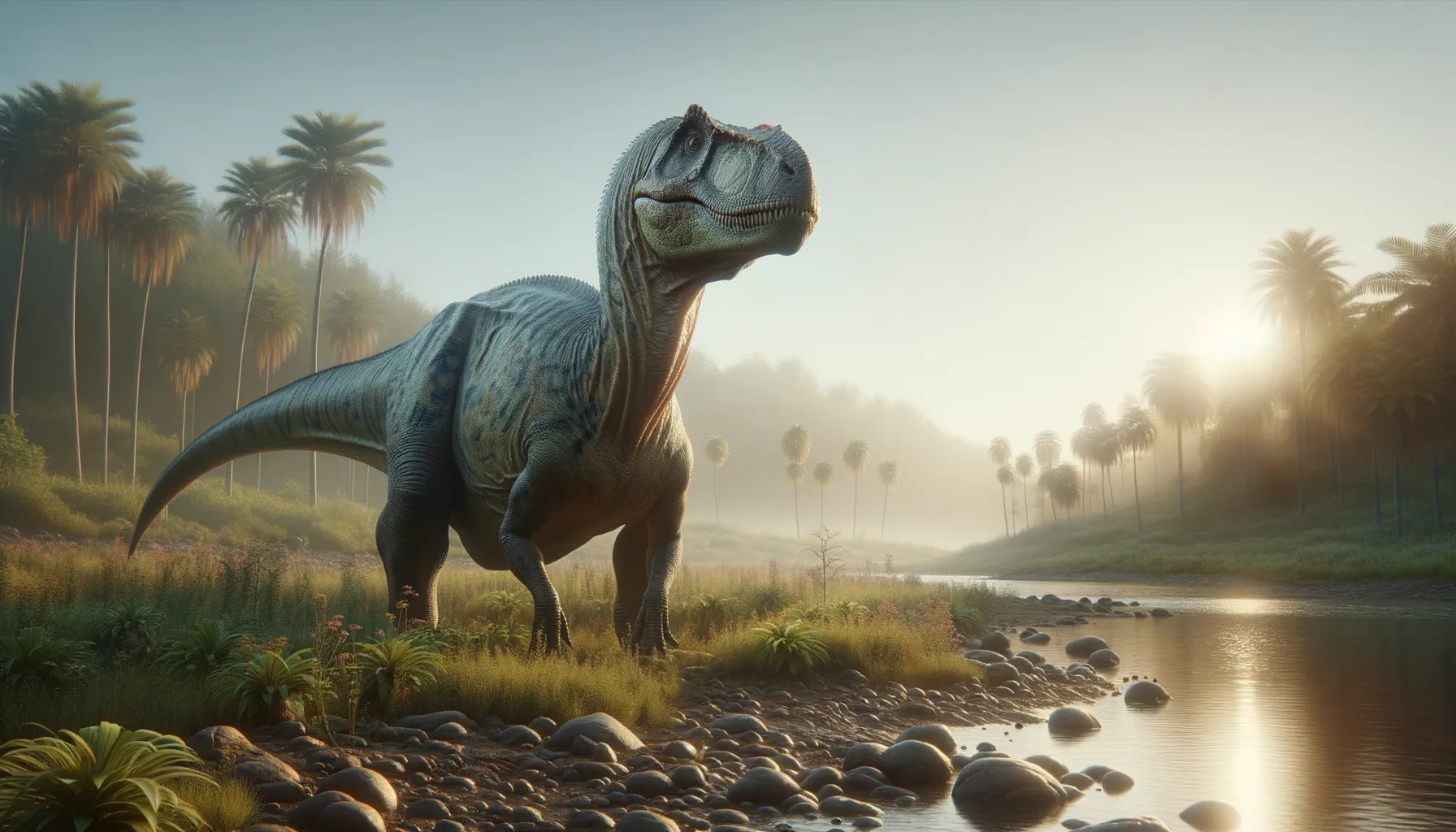
Batyrosaurus
A sturdy survivor of the Cretaceous plains!
Period
Cretaceous
Length
Roughly 20 feet in total length.
Height
Approximately 10 feet tall at the shoulder.
Weight
Estimated to weigh around 1.5 tons.
Batyrosaurus was a herbivorous dinosaur that roamed the earth during the Late Cretaceous period. Known for its relatively large but lightweight build, it was a member of the Hadrosauridae family, which are often referred to as duck-billed dinosaurs. The discovery of Batyrosaurus adds to our understanding of dinosaur biodiversity in ancient Asia, showing a wide range of species that lived and evolved in different ecological niches.
Diet
Batyrosaurus was an herbivore, feeding primarily on a variety of plants. It likely grazed on low-lying vegetation and may have also consumed leaves from shrubs and trees. Its dental structure was well-suited for processing plant materials.
Hunting
As a herbivore, Batyrosaurus did not exhibit hunting behaviors. It relied on its ability to find and consume plentiful plant resources in its environment. Its grazing likely took place in groups to deter predators.
Environmental challenges
During the Cretaceous period, Batyrosaurus faced significant challenges from climate changes that affected vegetation availability. Predatory threats from larger carnivorous dinosaurs also posed a constant danger. Additionally, competition with other herbivorous species for food and territory was a major factor in its survival strategies.
Speed
Relatively slow-moving due to its large size.
Lifespan
Estimated to live for several decades.
First discovery
Discovered in Kazakhstan in the early 2000s.
Fun Facts
- Batyrosaurus was a dinosaur that lived about 85 million years ago during the Late Cretaceous period.
- It was a herbivorous dinosaur, meaning it primarily fed on plants.
- Batyrosaurus is known from fossils found in what is now Kazakhstan.
- This dinosaur belonged to the group Hadrosauroidea, which includes many duck-billed dinosaurs.
- The name 'Batyrosaurus' means 'Batyro lizard', named after the Batyro region where its fossils were discovered.
- Batyrosaurus would have walked on both two and four legs, adapting its posture for feeding or movement.
- Paleontologists believe Batyrosaurus might have lived in herds based on the discovery of multiple individuals in the same area.
Growth and Development
Batyrosaurus likely hatched from eggs and underwent rapid growth to reach maturity. Juveniles were vulnerable to predators, relying on adults or herd behavior for protection. Its development from hatchling to full-grown adult involved changes in size, weight, and skeletal robustness.
Habitat
Batyrosaurus lived in a region that was once lush with forests and floodplains during the Cretaceous. This habitat provided ample plant life for its herbivorous diet and supported a diverse range of dinosaur species. Seasonal changes may have influenced its migratory patterns in search of food.
Interaction with other species
Batyrosaurus coexisted with various dinosaur species, including both predators and other herbivores. It may have formed mixed-species herds for greater protection from carnivores. Its presence contributed to the ecosystem by aiding vegetation cycling and providing food for plant-eaters lower on the dinosaur hierarchy.
Natural lifespan
Batyrosaurus could naturally live up to several decades in favorable conditions.
Reproduction
Like most dinosaurs, Batyrosaurus likely laid eggs in nests. It may have practiced some form of parental care to protect its young. Eggs were probably laid in secure locations, away from common predator paths, ensuring maximum offspring survival.
Social behaviour
Batyrosaurus is thought to have been a social animal, living in groups or herds. Such behavior would have provided safety in numbers and better access to food resources. The herd mentality would also play a role in safeguarding younger members from predators.
Fossil locations
Fossils of Batyrosaurus have primarily been found in Kazakhstan. These discoveries provide crucial information about dinosaur distribution across ancient Asia. Fossil sites offer insights into the environmental conditions that shaped their existence.
